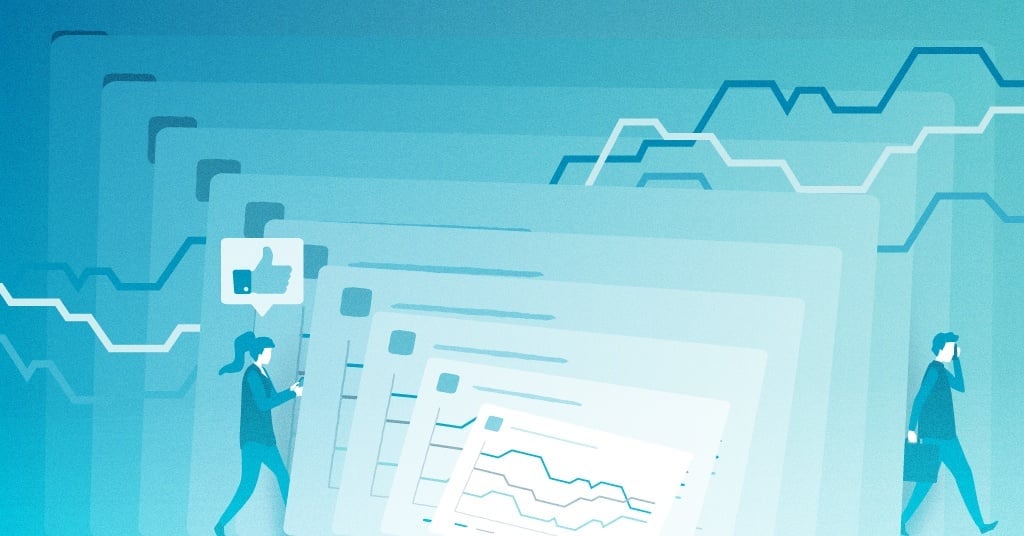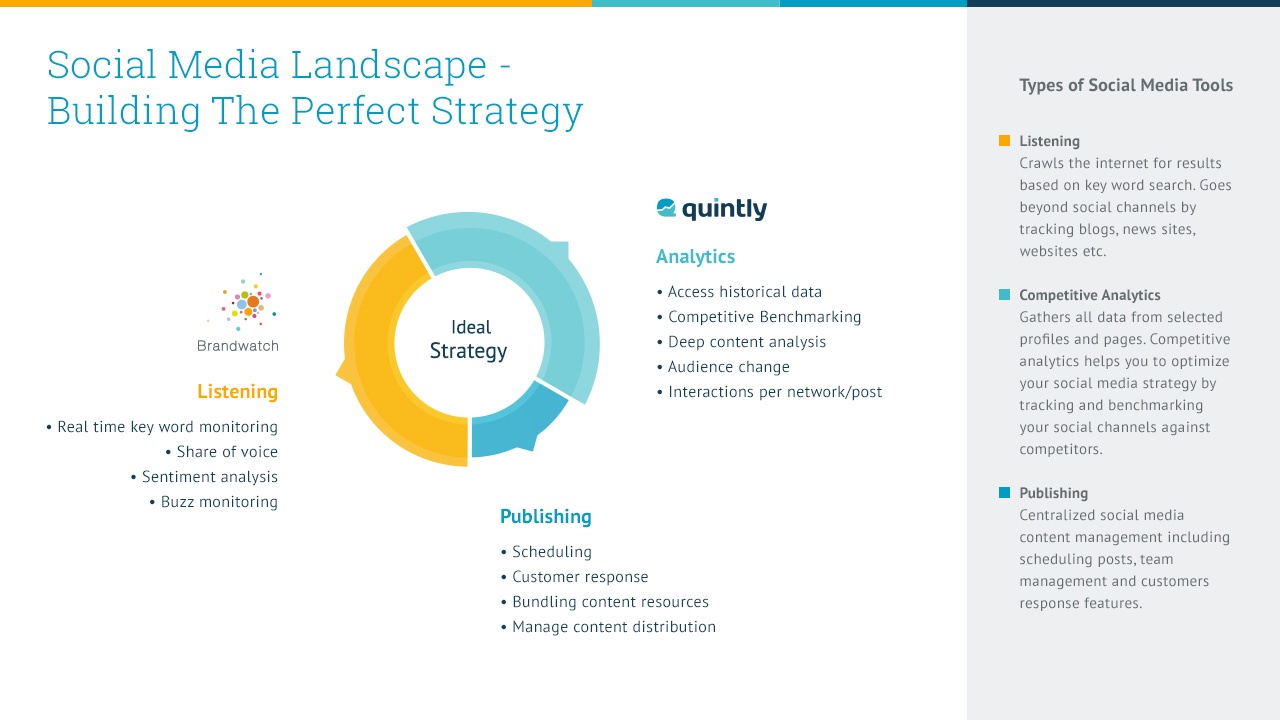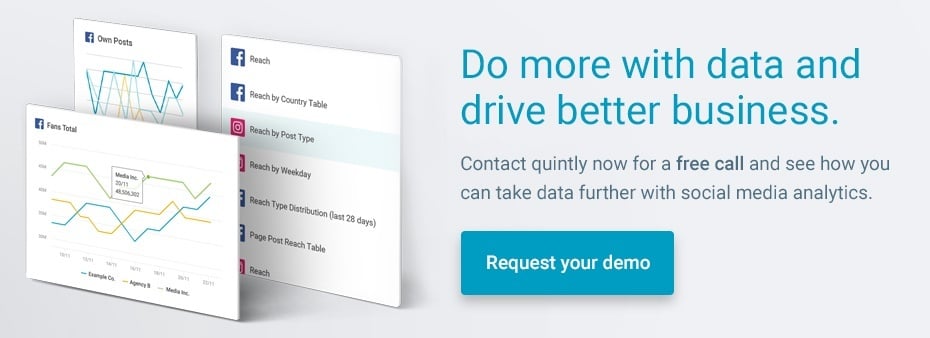
At the beginning of your digital marketing journey, your main focus lies in the creation of content, pitching your well-crafted articles to other blogs or trying out new methods on the different social media networks.
But what happens after you have published and distributed your content? This is the part where digital analytics becomes important because simply writing a blog article or social media post is not enough nowadays. Your upper marketer will always ask about the return of investment or the reason behind your digital marketing efforts.
These questions are sometimes really hard to answer without having the right tools at hand. For this reason, more and more digital marketers look into an analytical approach to their marketing efforts. I would even go so far as to say that every digital marketer is, to a certain extent, also a digital analyst.
But what is the best way to let your manager know about the impact your blog articles and social media posts are having? Is it necessary to hire a specialist web analyst or even a data scientist? I would argue no, and this is why I decided to provide to you not only an overview of available digital analytics methods but also some best practice examples that you can apply in your own strategy.
Digital Analytics
Digital analytics became more important in the recent past. One of the reasons for this is that a data-driven marketing strategy has a positive effect on your overall business efforts. Quantitative results are essential for every business because they help you to learn more about the current status and, of course, helps you to decide which road you should take.
Let us start with the groundwork and take a closer look into the definition of digital analytics. When I speak of digital analytics, I refer first and foremost to measuring your marketing channels: This could be the measurement of the interactions on your social media channels or a look at the new visitors to your website.
In a broader understanding of the term, you will also include analyzing the performance of your marketing funnels or the creation of a buyer persona.
This article concentrates on the former by providing further information on the different methods that are part of digital analytics, and the different tools that make it possible to conduct such analysis.
![]()
Web Analytics
As already stated, digital analytics consists of several different parts and one of these is web analytics. By web analytics we mean the measurement and analysis of your audience data, your audience behavior or your campaigns. But these are only three of the many approaches that web analytics encapsulates.
To put it simply, web analytics helps you to understand how users act on your website, which in turn provides valuable insights into the performance of your website. With this data, it’s possible to take the next steps towards website improvement it to make your website responsive for mobile devices, translating content into a different language or the kick-off process of your a/b testing process.
KPIs that are looked at in web analytics are indicators like: ‘how many website visitors did you have over a certain time’ or ‘what device does your audience prefer to browse when visiting your website’.
Web analytics is not only used to measure audience data, but also other business related KPIs, e.g. ‘how many times did a user put an item into his shopping cart’.
From this information, it’s possible to gain knowledge about the habits of your website visitors. Furthermore, you learn more about the buying intentions of your users and what further action to take to improve the overall performance of your website.
Web Analytics Tools
Now that we have developed an understanding of the benefits of web analytics, it’s time to look at platforms that enable you to conduct such an analysis. Web analytics software not only provide the data for you, they also assist you with the visualization of your analytics data.
Web data is usually presented in dashboards that can be customized to your specific needs, such as the data range of your analysis or country-specific dashboards. The latter part is important if you want to analyze the web traffic for a certain country, region or city.
One of the best-known web analytics tools out there is Google Analytics: a free web analytics service offered by Google to help you to track and measure your website traffic. I would recommend this tool for anyone that wants to get started with web analytics.
One small tip from my side: Make sure to look into the ‘Google Analytics Academy’ to get a full understanding of this powerful tool.
But Google’s own analytics solution is not the only tool available out there. A variety of other tools specialise in the analysis of website data. Here is a list with my tool recommendations:
- Matomo - the open source free web analytics software platform (formerly known as Piwik) provides detailed reports on your website and its visitors.
- Mixpanel - advanced mobile and web analytics that measures user-centric data, including everything from uploading a picture, playing a video or sharing a post.
- SimilarWeb - offers research tools that help users understand insights into any websites or mobile app, and provides detailed real-time analytics.
- CrazyEgg - measures which parts of your page are getting the most clicks.
- Hotjar - identifies user behavior through ‘heatmaps’, so you can see how people are using your website.
This was our web analytics part. For anyone interested in search engine optimization measurement, you’ll find the right tool in this SEO Analysis tool list.
Up next is my take on social media analytics - another key part of every complete digital analytics approach.
Social Media Analytics
So what exactly is social media analytics? As the name already indicates, ‘Digital Analytics’ focuses on tracking, analyzing and benchmarking your social media performance. When I speak of social media, I refer to the social media networks such as Instagram, Facebook or Twitter etc.

How does Social Media Analytics work?
To get a better understanding of how social media analytics works, it’s necessary to look at the mechanisms behind the analysis process. A social media analytics tool picks up all data from the social network’s APIs, stores them in a database and creates visualizations in the form of tables or metrics.
This is the basic concept of a social media analytics platform, but what is the actual value behind a solution like this? Social media analytics helps to create run benchmark reports, and assists with the process to figure out how active your channels are compared to your competitors’ channels.
It gives information about and insights into the interaction rates, followers, post types, response times and many other measures. With them, you can easily adjust and optimize your social media performance.
In short, here are some key advantages of using a social media analytics tool:
- get easy access to quantitative data from all major social networks.
- analyze all important social media numbers deeply.
- draw valuable conclusions from your data and that of your competitors.
Social Media Analytics Tools
It is pretty easy to get started with social media analytics. All of the major social media networks offer in-house analytics overviews, which you will find within your social media profile.
- Facebook Analytics - in-house analytics dashboard from Facebook that offers a basic overview of your own Facebook data, e.g. fan growth, reach and impressions. Free tool.
- Instagram Insights - log into your Instagram account on your mobile and receive information about your Instagram Stories etc. Free tool.
- Twitter Analytics - take a look at your Twitter performance of the past 28 days, including impressions, mentions and followers. Free tool.
- quintly - social media analytics dashboard tool that offers customized in-depth metrics, provides an overview of your data and your competitors' social media in one dashboard. Paid solution.
Alright, so far we’ve covered how to analyse your website and social media channels, but now it’s time to go the next step and to include social listening to your analytics suite.
Social Media Listening
Social Media Listening, also known as social media monitoring, is the process of tracking the word-of-mouth of your brand, agency or your clients on the web. A social media listening tool crawls the web for specific topics, keywords or phrases that you want to track. Through this process it becomes easier for marketers to learn what your audience has to say about you.
This process goes beyond simply paying attention to notifications that pour in via your social profiles, mobile apps or blogs. The benefit of social media listening is that you are able to discover new business opportunities and to build a stronger relationship with customers and prospects.
How does Social Media Listening work?
The entire web is crawled - based on queries - for publicly available mentions on social, links, news articles or blog comments related to the keywords or phrases you have set. The queries are written by using keywords that are logically linked by ‘Boolean’ operators.
While using a listening tool, you can discover every post and interaction that is important for your brand. This is especially of benefit when you want to gain market insights by detecting trends related to your search queries.
After you have gathered some data with the social listening tool of your choice, there are different options available for analyzing it:
- Sentiment analysis - this analysis looks at the number of responses that were positive or negative, telling you whether a product or campaign is well-received or not.
- Influencer scores - enables you to find influential people willing to help spread your brand on social media.
- Competitive analysis - benchmark your brand against your competition to learn more about the performance of your competitors’ campaigns.
- Language and location tracking - focuses on the demographics of your audience. Learn from which countries your audience comes from or what languages they use. This lets you find new markets you’d otherwise never have thought of.
Social Media Listening Tools
Here is an overview of available social media listening tools that can help you to identify the right tool for your needs. This list includes a variety of platforms with different approaches and different pricing models.
- Brandwatch - allows your business to analyze and utilize business conversations from across the social web. The platform includes social media monitoring and has an analytics part to collect, analyze and report business KPIs. Paid solution.
- Mention - this web media monitoring tool is available on mobile or via the web-based app. The tool features benchmarking through monitoring companies’ keywords, real-time monitoring and is available in 42 languages. Paid solution.
- Followerwonk - a Twitter-specific tool that allows users to gather and analyze information on Twitter users. The platform helps marketers discover potential followers or to compare Twitter accounts. Free version available.
- Google Alerts - you can monitor the web for interesting new content, mentions of your brand or even yourself, your competitors, industry leaders and so on. As they’re extremely easy to set up, this is social media monitoring for beginners. Free tool.
Business Intelligence
Now let us look into a more advanced part of the digital analytics branche. Over the last years did we see a rise of BI tools. Business Intelligence is a service that transforms data into actionable intelligence, which can then be used to set your organization’s strategic and tactical business decisions without having to learn to write SQL queries or waiting for your IT department to run the reports for you.
Analyzing data sets and reflecting analytical findings in reports, summaries, dashboards or graphs is one advantage of a BI platform. The other advantage is to help you to make educated business decisions based on data. The idea behind BI tools is to provide you with analytical facts instead of leaving you to trust your gut feeling.

How to make use of a Business Intelligence software?
In most of cases, stand your business operations in the center of a BI software. This means that historical, current and sometimes even predicted data is taken into account in this analyzing process.
One example of the functions of a software element is the possibility to make visual your data within the software. To give you an example, I will tell you how we at quintly make use of a BI tool.
You may have stumbled upon one of our social media studies, in which we take a closer look at huge sets of social media related data. Instead of analyzing the data in a conventional spreadsheet, we decided to conduct our analysis with a BI solution. This gave us the the advantage of creating individual dashboards, ad-hoc analysis which we use for our social media channels and, more importantly, visually presenting our data in one place.
Business Intelligence Tools
There are so many business intelligence tools available, so I decided to narrow down the list with a few tools I think you should take a look at. Spoiler alert: All mentioned platforms are paid tools.
- Looker - an analytics solution that allows businesses to make informed decisions. Third-party data tools can easily integrate with Looker so that you have all data in one place.
- Tableau - the business intelligence and analytics software Tableau is the platform that was created to make it easier for you to understand your data and to give you the ability to make data-based decisions. Learn: How To integrate quintly with Tableau.
- Cyfe - an all-in-one online business dashboard that helps users monitor and analyze data across all their online services, e.g. analyze your website data from Google Analytics.
- Sinsense - this solution covers everything from data preparation to visualization. With a focus on big data, scattered and complex datasets this tool gives you the right tools to answer your business oriented questions.
For everyone that is looking for an alternative to the aforementioned BI Tools should consider to take a look at these dashboarding tools.
- Geckoboard - an online dashboard platform that allows your to collect, visualize and sharing important information within your company. The tool allows you to track important information in real-time. Over 80 third-party data tools can easily integrate with Geckoboard, so that you have all data in one place.
- Klipfolio - the tool enables you not only to easily view and analyze data from multiple sources, but also helps you to improve data transparency. Discover with Klipfolio metrics that matter to your business.
Best Practice
Enough of the theory. Let’s look into some real life examples. For this, we asked fellow marketers what their digital analytics approach looks like.
Our best practice cases show you different methods used at their companies. The best thing about this is that you not only receive direct insights from marketing experts, but can also integrate those methods into your own digital analytics strategy.
Live Chat Software: Userlike
Pascal from Userlike spoke with me and told me how they conduct digital analytics at their SaaS company:
“Our main analytics tool is Kissmetrics. Its value stems from its ease of use in setting up reports and tying in your data.“
As well as Kissmetrics, another familiar tool is used:
“Google Analytics is great, of course, but it isn't easy for a non-techie to set up the tracking of new events and set up reports.“
Last but not least, Pascal also shared a book recommendation with us, from which he says:
“Lean Analytics a practical guide that clearly exposes the common myths, pitfalls and misconceptions of digital analytics – such as the need to be "data driven" – while offering a framework that allows you to focus on the most important metrics for the stage and industry that your business is in.”
Survey Maker: Survey Anyplace
I’m glad that Stefan, the CEO from ‘Survey Anyplace’, was so friendly as to share his insights on their digital analytics approach with us. Stefan and his colleagues mainly focus on organic reach when it comes to measuring their digital marketing efforts, and rely on a variety of tools.
For example, all brand mentions, whether with or without links, are tracked with Buzzsumo. When they want to learn more about the strength of the backlink profile, they take a look at Ahrefs.
‘Organic Impressions’ are tracked with Google’s Search Console and all their ‘Organic Traffic’ and tool signups are observed in Google Analytics.
But also, social media analytics tools are part of Survey Anyplace’s analytical approach:
Survey Anyplace has no specific social media analytics tool in place, but get all their data straight from the social media network itself. In particular, Twitter and LinkedIn are the main networks that they use.
For both networks, they have two different objectives to determine success:
- Twitter impressions last 7 days: the goal is to have >20K with >1% engagement
- LinkedIn impressions per post: a good post is one whose impressions are greater than my number of followers (>2K). This means there is a good part of impressions from outside my network.
Takeaways
Talking about digital analytics means speaking about multiple approaches at the same time. This analytical branch consists of so many different approaches and takes so many different angles into account, that you can’t speak of one single digital analytics method.
Digital analytics is a tool set consisting of different elements and all of them serve a different use. It’s this flexibility that makes digital analytics so interesting, because you don’t need to decide on one specific approach.
Web analytics, social media analytics, social media analytics or business intelligence platforms are all part of digital analytics and all of them bring their own value to your own analysis. Be it that you want to focus on the performance of your social media channels or that you want to improve the bounce rate of your website, all of elements can be part of the digital measurement.
Therefore, if you consider starting an analysis your own channels, make sure to create a plan beforehand. Outline the most important KPIs, as well as the important channels, before you start spending money on a digital analytics tool. Whereas a small e-commerce shop should rather focus on the use of free software solutions, it’s useful for bigger brands to build up a strong digital analytics suite.
Interested in sharing your best practice for analyzing digital data? Use our comment box below and let us know what you define as the perfect method.


Join the conversation. Leave us a comment below!